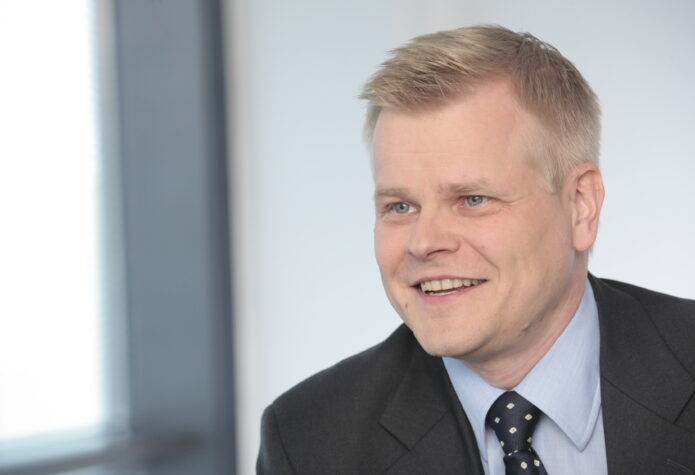Nokia Siemens Networks: speeding up evolution

We believe that technology evolution can occur faster and at a lower cost, says Kai Sahala of Nokia Siemens Networks. The company has received a NIB loan for developing a breakthrough innovation that combines different mobile telephone standards into an easy-to-upgrade single base station.
It’s called Single RAN (Radio Access Network). Is it really a breakthrough for the industry?
“It definitely is in many ways. It’s easy to adapt to future upgrades,” says Kai Sahala, the Head of Mobile Broadband Marketing in Network Systems at Nokia Siemens Networks.
“The technical idea behind this innovation is that radio can do more-through remote software upgrades without the expense of new hardware.”
As the mobile telecommunications technology has evolved from one generation to another, mobile operators have had to replace tens of thousands of base stations supporting the network. It always involves capital investments and it takes time before the revenue flow is back.
“The new Single RAN base station combines three mobile phone standards, including an upcoming one, into a single frequency layer. In order to switch from yesterday’s standard to the one of tomorrow, you no longer need to replace the hardware,” continues Mr Sahala.
From a business point view, it’s about time and speed. Add lower capital expenditure and fewer staff to run a Single RAN-powered network. These are some obvious benefits for businesses using the new technology.
“The evolution of technologies in the telecommunications industry has been very fast during the recent 10 years. Now the evolution can move on even faster and at a lower cost,” says Mr Sahala.
After all, isn’t all this race about cost efficiency? And a lighter carbon footprint? The environmental effect of the new technology is that it can help cut as much as 70% of energy consumption for a typical 2G/3G radio site compared to traditional base station sites.
“There is no need for air conditioning. The new base station is built for outdoor usage,” Mr Sahala explains.
The environmental promise of Nokia Siemens Networks’ innovation, along with the contribution this technology is making to the advancement of the telecommunications industry, has been at the core of NIB’s decision to provide a EUR 30 million loan for this R&D project.
According to Kim Krokfors, Senior Manager Origination at NIB, the 7-year-maturity financing is important in supporting Nokia Siemens Networks’ target to keep in the forefront of market development. He says:
“Research and development is one of the focus areas for the Bank. Thanks to this innovation, the borrower can offer competitive solutions that will lead to better network efficiency, improved environmental performance, and reduced costs for its customers.”
Ben Hunt, Head of Financial Relations at Nokia Siemens Networks, says that the loan from NIB has helped the company diversify the sources of its funding.
“We have very good working relations with NIB and are pleased to add this lending facility to our lending base,” says Mr Hunt.
With a EUR 2 billion annual R&D budget, Nokia Siemens Networks is among the top 40 businesses worldwide in investments into innovations. The corporation has 16,000-strong R&D staff in 38 development centres in Finland, Germany, Israel, China, India and the United States.
